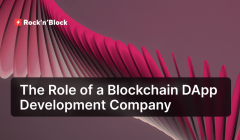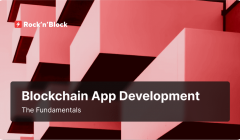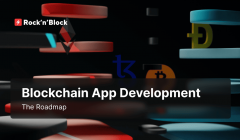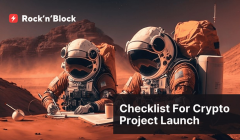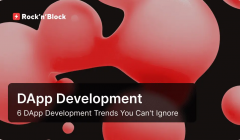Key Blockchain App Development Trends in 2024
03 May 2024With the rapid expansion of the blockchain market, the landscape of blockchain app development is constantly advancing. In 2024, the industry is experiencing unprecedented growth and innovation, driven by emerging trends that are reshaping the way blockchain applications are built and deployed. This article explores the key trends that are shaping blockchain app development in 2024.
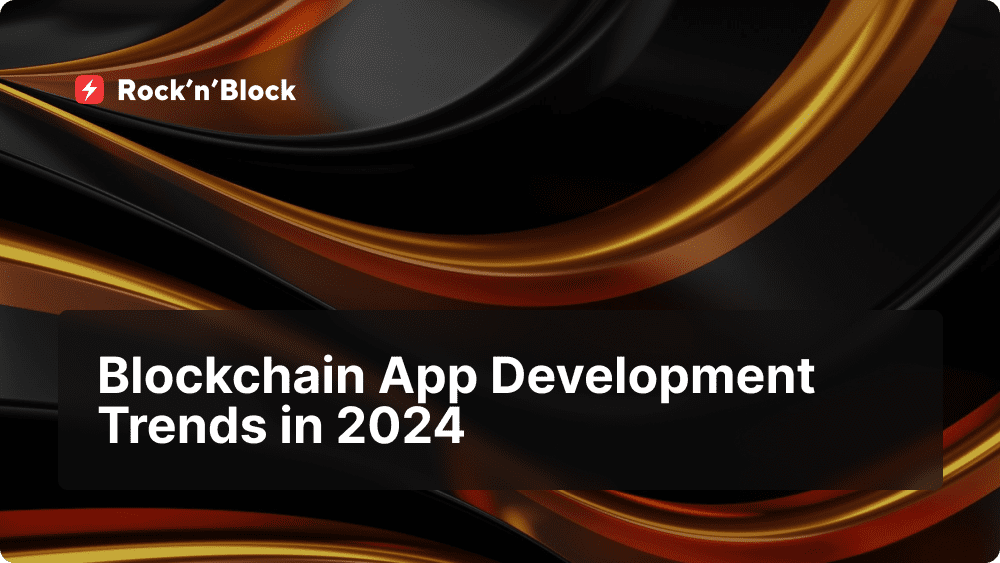
Table of Contents:
-
Market State at the Beginning of 2024
-
Trends Shaping Blockchain App Development in 2024
-
1. Rise of Gaming DApps Development
-
2. Innovations in NFT Development
-
3. Increasing Role of DAOs
-
4. KYC Integration into DeFi Apps
-
5. Growing Need for Interchain Operability
-
Conclusion
Market State at the Beginning of 2024
As 2024 begins, the rise of cryptocurrencies’ influence and the upcoming Bitcoin halving is generating optimism throughout the Web3 industry. On-chain metrics suggest a positive trajectory for the year, despite its fluctuations. Let’s analyze the current market situation of this promising year in the dApp development industry.
Cryptocurrency Market Growth
The cryptocurrency market experienced a significant increase in early 2024, with a total market cap of $2.6 trillion. Bitcoin (BTC) leads the way with a market cap of $1.3 trillion as of March 6, 2024, accounting for 49.92% of the market. This underscores Bitcoin's position as the leading cryptocurrency.
Notably, stablecoins have also carved out a significant niche, with a market cap of $144 billion, capturing 5.55% of the total crypto market cap.
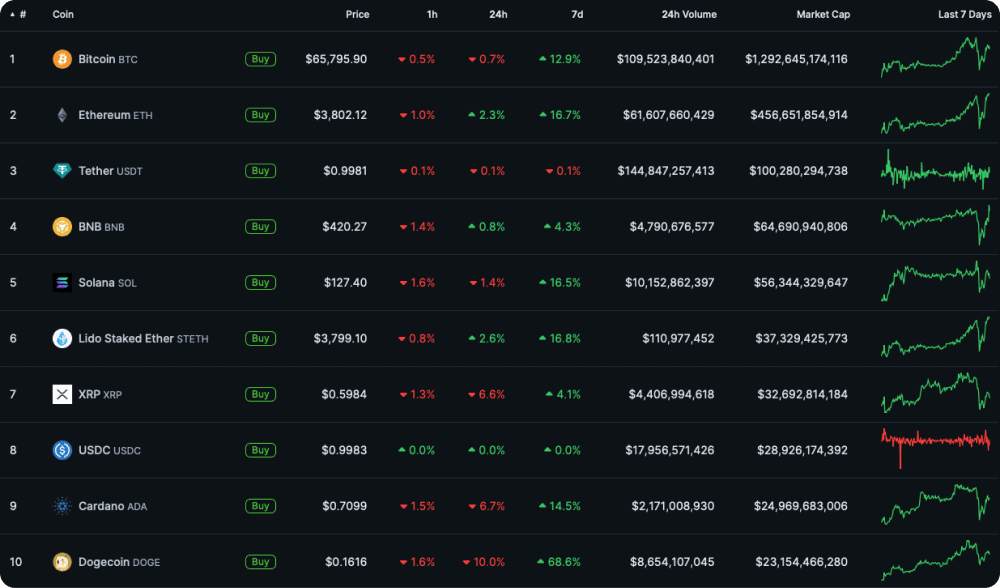
Cryptocurrency Prices by Market Cap
The recent milestone of Bitcoin surpassing the $69,000 mark underscores the continued investor confidence and bullish sentiment permeating the market. This situation has had a positive impact on the cryptocurrency landscape, driving up the prices of altcoins to new heights.
Moreover, it is projected that the next Bitcoin halving event will occur in April 2024. During this event, mining rewards will be halved from the current 6.25 Bitcoin per block to 3.125 BTC per block added to the blockchain. To provide context, the current daily generation of Bitcoins stands at around 900, which will decrease to 450 following the halving event. However, this cycle presents a unique perspective in terms of demand dynamics.
Historically, halving events have precipitated price increases due to supply shocks, prompting estimates of Bitcoin's future performance, with projections ranging from $150,000 to $500,000.
Increasing Investment Inflow
Research conducted by London-based Nickel Digital indicates a significant increase in allocations from institutional investors and wealth managers towards cryptocurrencies. According to their findings, approximately 74% of respondents plan to elevate their crypto investments in the 2024 year, driven by a more favorable outlook on the sector. This surge in investment interest is further fueled by factors such as the robust performance of the market and the recent approval of spot bitcoin ETFs by the SEC.
Growing dApp Industry
Market growth and investment inflows also signal the blossoming of dApps. The dApp industry has witnessed a robust start in the early months of the year 2024, showcasing a remarkable achievement of 5.3 million daily Unique Active Wallets (dUAW) according to DappRadar. This number represents an 18% increase from the previous month (December 2023), reaching a peak not seen since 2022 and highlighting a continued upward trend. As the Bitcoin halving event approaches, there is growing anticipation of a potential bullish trend in the industry.
Focusing on specific industry segments, the gaming sector maintains its lead with a consistent 1.5 million daily dUAW. Additionally, the DeFi sector shows steady performance, holding at 1 million dUAW, which mirrors the metrics from the preceding month.
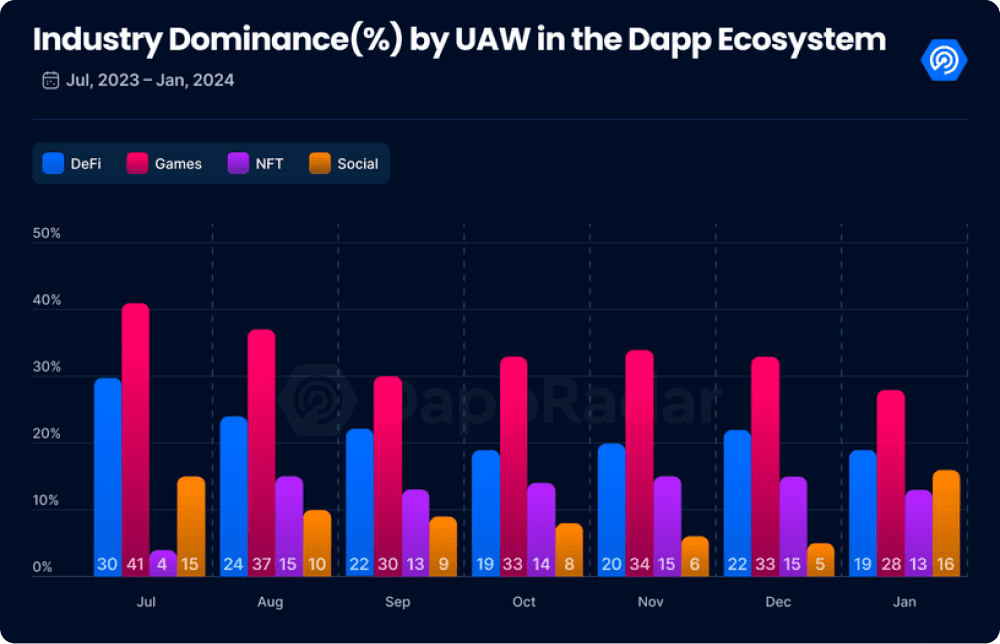
As we navigate the cryptocurrency market in 2024, it is clear that we are on the edge of a new era defined by innovation and disruption. The increasing mainstream acceptance and recognition of digital assets as a legal store of value is underscored by the continued expansion of cryptocurrencies, led by Bitcoin.
Now that we've glimpsed the thriving landscape of decentralized applications, let's delve deeper into their development trajectory and uncover the key trends shaping their evolution.
Trends Shaping Blockchain App Development in 2024
The year 2024 is a significant marker in the evolution of blockchain app development, as the industry experiences a convergence of technological advancements and market dynamics. Emerging trends promise to redefine the way we interact with decentralized technologies in this era of rapid innovation. Let's explore them below!
1. Rise of Gaming DApps Development
As we mentioned in the section above, gaming stands as a leader sector in the blockchain app development ecosystem. Gaming has significantly influenced the dApp development sector, accounting for 1.5 million dUAW, which equates to a 28% dominance over the entire dApp industry. Now, let's examine some emerging trends.
Read more about Gaming DApp Development Services!
Integration of DeFi
A noticeable trend in blockchain app development for gaming is DeFi elements integration. Gamers are increasingly drawn to projects where DeFi components enhance user interaction and value accumulation within gaming ecosystems.
Easy Web3 Experience for Web2 Users
The transition from Web2 to Web3 gaming is becoming smoother. Many of the projects offer a familiar Web2 experience accessible to all users, even those who are newer to cryptocurrencies.
X-to-Earn Models
The rise of X-to-Earn apps represents a significant shift in the gaming industry, enabling users to earn money by leveraging their skills and time spent playing. Play-to-Earn (P2E), Learn-to-Earn (L2E), Move-to-Earn (M2E), and Watch-to-Earn (W2E) approaches are gaining popularity, revolutionizing player interactions with blockchain technology and incentivizing deeper engagement within gaming ecosystems.
Adoption of L2 and L3
Another emerging trend in blockchain app development for gaming is the adoption of Layer 2 and Layer 3 solutions to address scalability issues. These solutions offer faster and more cost-effective transactions, enabling Web3 games to support larger player bases and more complex gameplay mechanics.
For deeper insights, explore our related article on gaming trends: Web3 Game Development Trends in 2024!
2. Innovations in NFT Development
NFTs hold a crucial position in the realm of blockchain app development, with several emerging trends taking center stage in 2024. Among these trends are the following:
New Token Standards
Experimental token standards, like ERC-404, bridge the gap between fungible and non-fungible tokens, offering fractional ownership and improved liquidity for digital assets. This standard has the potential to revolutionize the trading dynamics of NFTs, as demonstrated by projects such as Pandora and DeFrogs. Although still in the development phase and not yet formally proposed, it has shown promising results.
Dynamic NFTs (dNFTs)
Dynamic NFTs are reshaping digital asset ownership by introducing dynamic elements that evolve over time. In digital art, they bring interactivity through animations, while in gaming, they enable assets to adapt based on player actions, providing personalized experiences. Furthermore, dNFTs show potential in virtual real estate and collectibles, where assets can gain value and rarity over time, enhancing their appeal.
AI and NFTs
The integration of artificial intelligence with NFTs is pushing the boundaries of digital art creation, sparking debates on ethics and authorship. AI-generated NFT art, powered by technologies like generative adversarial networks (GANs), is transforming art production by generating unique pieces ranging from static images to interactive experiences.
NFTs Focus On Real-World Utility
NFTs are increasingly shifting towards real-world utility, extending beyond the realm of digital art and collectibles to encompass practical applications in various industries. NFTs can be used to tokenize physical assets, including real estate properties, luxury goods, and intellectual property rights. By representing these assets as unique digital tokens on blockchain networks, NFTs enable fractional ownership, enhanced liquidity, and transparent ownership records.
Use of NFTs in Real Estate
An innovative trend in NFT software development is the real estate assets tokenization, offering fractional ownership and unlocking investment opportunities previously inaccessible to many investors. Tokenization of real estate assets as NFTs allows fractional ownership, diversifying investment portfolios and increasing liquidity. Additionally, it enhances property transactions by securely recording ownership records on blockchain and offering immersive virtual experiences for buyers.
3. Real-World Asset Tokenization
Real-world asset tokenization emerges as a prominent trend in the blockchain app development landscape, offering the potential to revolutionize traditional finance and investment landscapes. Real-world asset tokenization involves leveraging blockchain technology to digitize tangible assets such as real estate properties, fine art pieces, company stocks, and commodities like gold or oil. Through tokenization, these physical assets are represented by digital tokens on a blockchain network.
Fractional Ownership
Tokenization enables fractional ownership of high-value assets, allowing investors to purchase and trade smaller portions of assets. This democratizes investment opportunities, as individuals can invest in assets that were previously financially out of reach, while also diversifying their portfolios across multiple assets.
Applications in Different Sectors
In addition to traditional assets, real-world asset tokenization extends to unique asset classes such as intellectual property rights, rare collectibles, and revenue-generating assets like music royalties and renewable energy projects. This trend reflects the versatility of blockchain technology in digitizing and monetizing a wide range of assets beyond conventional financial instruments.
4. KYC Integration into DeFi Apps
The integration of Know Your Customer (KYC) protocols into DeFi applications is gaining significant momentum in blockchain app development. KYC processes, traditionally associated with centralized institutions, enhance security and regulatory compliance within DeFi platforms. As DeFi attracts more and more users, KYC verification becomes essential to prove user identities, ensure compliance with anti-money laundering (AML) regulations, and mitigate illegal activities.
KYC integration helps bridge the gap between traditional finance and decentralized networks, promoting interoperability and legitimacy with regulators and institutional investors. However, blockchain app developers must balance privacy and compliance when implementing KYC integration.
The landscape of KYC in blockchain app development is poised for significant advancements and innovations in 2024.
Advanced Biometric Verification
Biometric systems are evolving, with a notable trend towards multimodal biometrics. This approach combines multiple biometric verifications, such as facial recognition, to bolster security and authentication processes.
AI and Machine Learning Advancements
AI and machine learning algorithms will continue to advance, making KYC processes smarter and more automated. These technologies will be able to identify fraudulent documents and detect suspicious patterns with greater accuracy and efficiency.
Blockchain-Enabled Identity Verification
Blockchain technology holds promise for secure and immutable identity verification. By leveraging tamper-evident ledger, blockchain app development can revolutionize KYC processes, mitigating the risks of identity theft and data breaches.
Regulatory Emphasis on Digital Identities
Regulatory frameworks are evolving to address the complexities of digital identities and remote verification methods. In 2024, more comprehensive regulatory measures tailored to the nuances of digital identity verification are expected.
Rise of Self-Sovereign Identity (SSI)
The concept of self-sovereign identity, wherein individuals have full control over their digital identities without reliance on intermediaries, is gaining momentum. In 2024, we may witness the mainstream adoption of SSI initiatives, reshaping the landscape of KYC processes.
5. Growing Need for Interchain Operability
Interchain operability refers to the ability of different blockchain networks to communicate, exchange data, and transfer assets seamlessly. It enables interoperability between disparate blockchain platforms, allowing them to interact with each other and share information in a decentralized manner. Let’s delve into some key trends.
Blockchain Companies Expand To New Chains
Choosing a blockchain for DApp development is a crucial step. Every year, the number of blockchain networks significantly grows. As of January 2024, there exist over 1,000 different blockchain systems globally, divided among public, private, hybrid, and consortiums. This increasing number of networks has led to the trend of blockchain app development companies expanding to new chains more and more.
However, a problem arises from this diversity. While many projects use similar (if not identical) programming languages, most popular chains do not. As a result, many dApps are limited to just one chain. This limitation highlights the pressing need for interoperability, the ability to move funds between blockchains seamlessly.
Explore our related articles:
Interoperability-Focused Technologies
In response to this challenge, the blockchain industry has witnessed the rise of interoperability-focused technologies. These solutions aim to bridge the gap between different blockchain networks, enabling seamless communication and value transfer across disparate platforms.
Cross-Chain Bridges
In blockchain app development, cross-chain bridges facilitate asset and data transfer between different blockchains, ensuring interoperability by allowing seamless movement of assets. They lock assets on one blockchain and issue equivalent tokens on another, enabling decentralized exchanges and asset swaps.
Sidechains
Another significant trend in interchain operability is the utilization of sidechains. Sidechains are independent blockchains connected to a main blockchain, operating in parallel to offload transactions and computations. They offer scalability and flexibility, allowing developers to experiment without affecting the main chain's stability. Sidechains enable assets to move between the main chain and sidechains, facilitating interoperability.
Interoperability Solution Projects
Projects like Cosmos and Chainlink are gaining more and more popularity in blockchain app development to face interchain operability problems. Cosmos provides a network of interconnected blockchains that communicate through zones and the Cosmos Hub, utilizing the Inter-Blockchain Communication (IBC) protocol. Similarly, Chainlink offers a decentralized oracle network that bridges the gap between blockchain networks and external sources, facilitating seamless communication and interoperability in blockchain app development.
Conclusion
There is no doubt that the blockchain industry is experiencing a period of remarkable growth and innovation. The trends we've discussed are shaping the future of blockchain applications.
Looking ahead, the possibilities for blockchain app development are limitless. Continued advancements and collaborations within the ecosystem will lead to groundbreaking applications that revolutionize industries, empower users, and drive the mass adoption of blockchain technology. The journey towards a decentralized future is well underway, and the trends of 2024 are paving the way for an exciting and transformative era in blockchain app development.
We ❤️ Development
Follow us on social media to receive the hottest blockchain development updates
Twitter ⚡️Telegram⚡️LinkedIn⚡️Facebook
